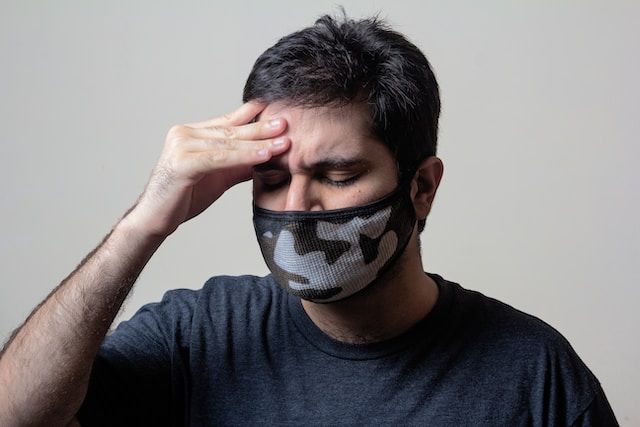Need a CPAP Alternative? Call: 724-935-6670
OFFICE PHONE: 724-935-6670
Migraine Treatment

What are migraines and cluster headaches?
Migraines are a recurring type of headache. They cause moderate to severe pain that is throbbing or pulsing. The pain is often on one side of the head. Other associated symptoms may include nausea, weakness, and sensitivity to light and sound.
Migraine is a highly prevalent disease affecting at least 12% of the general population, including children. Approximately 18% of American women, 6% of men, and 10% of children experience migraines, with a lifetime prevalence of up to 25% among women. Migraine can result from a combination of genetic, environmental, and lifestyle factors.
Cluster Headache is a primary headache disease that is estimated to affect less than 1% of the general population. It can be one of the most painful types of headaches that one can endure. Both migraine and cluster headaches can occur during childhood, increase until nearly 40 years of age, and then gradually begin to decrease. Regardless of their prevalence, when either headache disorder occurs, the affected individual can become quite debilitated and find it difficult to function to complete daily activities
Treatment Options
Conventional pain management strategies for patients with these disorders are largely ineffective and often contraindicated to a significant subset of sufferers.
Previous nerve circuit block techniques involved painful, poorly reproducible, and technically challenging procedures. Leading prescription drug therapy may only provide marginal relief with significant costs and/or side effects that can adversely impact a person’s quality of life. Additionally, long-term use of synthetic prescription drug preparations for the management of migraine and cluster headaches, facial neuralgias, and other atypical facial pain can have a debilitating effect on the liver and kidney that metabolize and excrete these drug products.
Nerve fibers that originate from two closely associated nerve centers - called “ganglions” - are the primary contributors to migraine and cluster headaches. These nerve centers control the pathway of the nerve activity to the trigeminal nerve, specifically the second branch of the nerve which is most often the one responsible for the development of the headache. In other words, the nerve center is the circuit breaker and the nerves originating from it are the breaker switches. When the circuit breaker is switched off, the electrical current cannot continue to the breaker switches and what they control.
Innovative Treatment
A more recent and very innovative technique that is performed at Pittsburgh Dental Sleep Medicine can turn off the ”circuit breaker” and essentially block the nerve impulses firing the cascade of activity that results in migraine and cluster headaches.
The procedure employs a specially designed device to locate and provide unprecedented access to the nerve center and the trigeminal nerve circuit where a unique formulation is then released. The medicament used is effective in providing immediate and long-term relief by blocking pain impulses conducting through the nerve center and associated nerve fibers while restoring normal nerve function. The procedure has also been used successfully for the treatment of Trigeminal Neuralgia. It is safe and simple and can be performed without sedation in our office. There are no invasive injections or harsh medications used.
Careful tracking of the safety of the procedure demonstrates exceptional success in patients, minimal discomfort, and no reported severe adverse events or reactions. Shortly after the procedure is performed, the patient will notice the therapeutic effect of the medicament on reducing or eliminating the frequency and intensity of the symptoms of the headache or neuralgia. The effect can last four to six weeks or months on end.
It is recommended that the procedure is repeated within a month to reinforce and lengthen the therapeutic effect from the initial treatment. The treatment can replace or substantially reduce the need for monthly dosages of costly prescription medications.
-- Common side effects may include brief tearing of the eye and a warm feeling on the side of the face on the treated side. There can also be a transient numbness in the throat and a metallic taste in the mouth, both related to the use of the anesthetic in the formulation.
Call Us Today to Schedule a Consultation
Consultation, a thorough clinical examination, and assessment can determine if you can benefit from the innovative therapies offered by our dental specialist, Dr. Michael Hnat, at the McMurray location.
Michael F. Hnat DMD, FAACP, has had extensive education and training in the fields of Craniofacial Pain and TMJ Disorders. Dr. Hnat completed the prestigious mini-residency in TMJ Disorders from Tufts School of Dental Medicine and the mini-residency in Craniofacial Pain through the American Academy of Craniofacial Pain (AACP). He also completed his Fellowship in Craniofacial Pain through the AACP.
He holds Board Certifications from the American Board of Craniofacial Dental Sleep Medicine as well as the American Board of Dental Sleep Medicine. His concern and passion for helping individuals with head, face, and neck pain are evident in the care he provides to his patients.
Contributing Resource: https://americanmigrainefoundation.org
Quick Links
All Rights Reserved | Pittsburgh Dental Sleep Medicine

